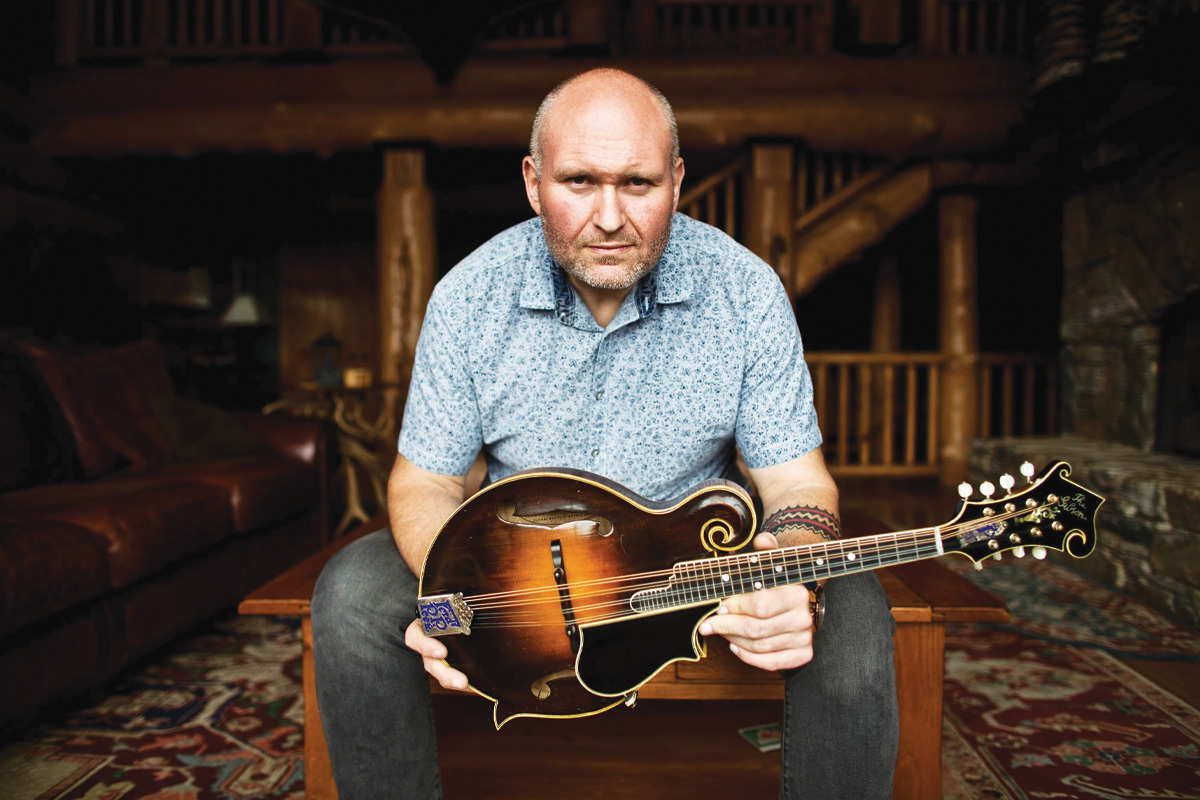Oversight of mental health foundation called into question
Western North Carolina’s mental health agency may be headed for a civil war with its partner foundation.
Smoky Mountain Center, a quasi-state body that oversees mental health in the region, hopes to wrest $20 million in assets away from its sister nonprofit, citing a lack of oversight for public funds.
For three decades, the Smoky Mountain Center has relied on its nonprofit foundation Evergreen to bolster mental health and substance abuse services in the region.
But the foundation has grown increasingly estranged from the agency it was intended to support, according to board members of Smoky Mountain Center.
“There has been a disconnect there,” said Ronnie Beale, a member of the Smoky Mountain Center board and Macon County commissioner.
Communication between the two entities is sparse to nonexistent. The center’s requests for financial assistance have repeatedly been turned down, and the foundation won’t even disclose how its funds are being spent, according to Brian Ingraham, the executive director of Smoky Mountain Center.
“It is not supposed to be some organization off on their own with no public oversight,” Ingraham said.
Ingraham and his board of directors have proposed a major overhaul of the foundation to bring it under the auspices of Smoky Mountain Center.
“The bottom line is the board thought these funds should be under public scrutiny,” Beale said. “We feel it is public money, and it should be under public oversight.”
A letter was sent to foundation board members this week asking for a meeting within 30 days to discuss the issue.
Tom McDevitt, the executive director of the Evergreen Foundation, has little to say for now.
“Until whatever meeting takes place between Smoky Mountain and whoever, we are not going to be able to comment,” McDevitt said.
Until recently, the foundation and Smoky Mountain Center shared the same director — McDevitt. But McDevitt resigned from Smoky Mountain Center under pressure in fall 2008. McDevitt had come under scrutiny for using his position for personal financial gain.
He managed to hang on to his position as director of the Evergreen Foundation, however, which had a different slate of board members.
McDevitt disagrees with the line of argument Smoky Mountain Center is presenting.
“I don’t feel there is any disconnect whatsoever,” McDevitt said.
McDevitt said he has met with the board of Smoky Mountain Center whenever he’s been asked. But when Smoky Mountain Center needed an emergency meeting over state budget cuts, Ingraham said it took weeks to get it arranged.
State budget cuts axed $10 million over two years from indigent care — a fund that covers mental health and substance abuse treatment for those who can’t afford it. The 20 percent cut means poor people who need therapy or treatment won’t be able to get it now.
Smoky Mountain Center asked the foundation for a $2 million grant to make up some of the difference.
“Wouldn’t this seem like exactly why the foundation was developed?” Ingraham said.
But the foundation granted them only $200,000. Smoky Mountain Center also asked the foundation to forgive their rent for the year.
Smoky Mountain Center pays $280,000 a year in rent to the foundation for office space and a mental health and substance abuse clinic called The Balsam Center.
The two buildings were bought and paid for with state money given to Smoky Mountain Center but were then passed along to the foundation, which manages the properties.
The foundation owns the buildings as a result. Ingraham said it is wrong that the foundation won’t cut Smoky Mountain Center a break on rent when they paid for the buildings in the first place, Ingraham said.
“We gave them the money, but now they say ‘We aren’t going to help you,’” Ingraham said. “That was the point where people realized there was nothing appropriate or correct about this any longer.”
But McDevitt said the foundation’s purpose is about more than helping Smoky Mountain Center. Its mission is to support people with mental health, substance abuse and developmental disabilities throughout the seven counties.
“That is the sole purpose of the Evergreen Foundation,” McDevitt said. “We have done a very good job of that over 33 years.”
That mission, he said, can include making grants to private practices that offer counseling and mental health treatment other than Smoky Mountain Center. McDevitt said that the foundation has given out $200,000 in grants to private mental health practices this fiscal year.
Ingraham said he has asked McDevitt to share what grants have been given out and how the foundation is spending money.
“We have asked for that information, and it has not been forthcoming,” Ingraham said.
McDevitt disagreed.
“They did know about them. Of course they knew about them,” McDevitt said of the other grants.
How it all started
When Evergreen Foundation was created in the late 1970s, it was out of necessity. State agencies couldn’t buy and resell property, and Smoky Mountain Center needed to amass an inventory of office buildings for mental health and substance abuse counselors to work out of throughout the seven western counties.
But the law has since changed, and state agencies can now act as their own property management arm.
While the foundation has always had its own board of directors, it was historically tightly controlled by Smoky Mountain Center. Early on, the Smoky Mountain Center appointed the foundation board, and many of the members sat on both boards.
But in 2001, when the state launched mental health reform, everything was on the table from privatizing mental health services to consolidating the regional agencies like Smoky Mountain Center.
In the ensuing turmoil, Smoky Mountain Center feared the state would attempt a money grab to seize the assets of the foundation. So it purposely built a firewall around the foundation. Bylaws were rewritten to make it a private entity, separate from Smoky Mountain Center.
“It was done to protect the assets for their intended purposes,” said Shelly Foreman, community director for Smoky Mountain Center.
At the time, no one envisioned that the foundation would one day end up with a completely separate director and board that had little interaction with Smoky Mountain Center, Foreman said.
“It was never the intention that Evergreen be disconnected from what the service needs and funding needs are in the community,” Foreman said.
Ingraham and his board hired an auditor to track all the money that had gone into the foundation since its creation in 1977. They determined $14.5 million in county and state tax dollars have flowed into the foundation’s coffers.
Nearly all of the money was for purchasing buildings in the seven western counties — from office space for mental health counselors to substance abuse clinics to the central headquarters for Smoky Mountain Center.
Smoky Mountain Center once operated its own teams of mental health counselors, therapists and psychologists throughout the region, housed in the office space owned by Evergreen but paid for initially with state funds.
The state has since privatized mental health, so most of that office space is now rented to private mental health practices — or in some cases to whoever is willing to rent the building whether the tennant was in the mental health field or not. The foundation keeps all the rent money.
Ingraham said the foundation is operating more like a property management and investment company than a nonprofit with a mission to fulfill.
“It is income that was generated from public money,” Ingraham said.
But McDevitt said the origin of the money isn’t relevant. It started out as public money, but was given to a private organization to carry out its mission.
“Where it goes to, it loses its identity as public funds,” McDevitt said.
The upshot
Smoky Mountain Center wants a new governing structure for the foundation. The proposal calls for the current foundation board to be dissolved. A new foundation would then be created under a new set of bylaws — stipulating that Smoky Mountain Center gets to appoint the board and hold a majority of the seats.
While the board of Smoky Mountain Center is a public body — meaning their meetings, financial records and actions are open to the public — the foundation meets in private and has no obligation to share its financial information other than its annual nonprofit tax filing.
The aim is to restore public oversight, Beale said.
The 30-member board of the Smoky Mountain Center voted unanimously for the proposal earlier this month.
To back-up the proposal, county commissioners from the seven western counties have been asked to pass similar resolutions over the next two weeks. Macon County commissioners were the first to do so this week.
Macon County’s resolution says if diplomatic efforts fail, legal routes may be necessary.
John Bouknight of Highlands, the president of the Evergreen Foundation board, would not comment in detail until after meeting with the Smoky Mountain Center board.
He said Evergreen’s mission goes far beyond just supporting the needs identified by Smoky Mountain Center.
“They aren’t everything,” Bouknight said. “I think we are following our mission statement. These are all very dedicated people.”
The foundation board only meets four times a year. Beale said he trusts that their primary interest is serving mental health and substance abuse needs, but he isn’t sure how informed they are.
“The only thing they know is what their director tells them,” Beale said. “I do have a lot of respect for some members on that board, and I think their heart is in the right place and will do the right thing.”
In the meantime, Smoky Mountain Center has alerted the state attorney general’s office of the unusual situation.
“We are talking about state funds that now exist within an organization that has no affiliation within Smoky Mountain Center and chooses to do whatever they want with it,” Ingraham said.
EPA ozone standards
Limit prior to 2008: .08 parts per million
New limit set in 2008: .075 parts per million
New limit pending in 2010: Between .06 and .07 parts per million
How WNC stacks up
Ozone levels have improved gradually in WNC over the past 10 years. They can vary widely from year to year depending on weather, however. Wetter and cooler summers see fewer bad ozone days that hotter, drier ones.
To determine whether WNC meets the new ozone limits, an average of three years worth of ozone readings — from 2008 through 2010 — will be used.
Here’s the levels for ozone monitoring stations in the region based on the three-year average from 2007-2009. Ozone is worse at higher elevations and surprisingly consistant across the mountains.
Waynesville .068 parts per million
Bryson City .064 parts per million
Asheville .069 parts per million
High elevation sites
Purchase Knob .074 parts per million
(near Hemphill Knob above Jonathan Creek in Haywood County)
Frying Pan .074 parts per million
(near Mount Pisgah off the Blue Ridge Parkway in Haywood County)
Mount Mitchell .074 parts per million
(highest elevation on the east coast)
• A monitoring station has been recently installed on Barnet Knob on Cherokee Indian Reservation and will be providing data this year.
GOP hopes voter anger will help beat Shuler
Republicans hope 2010 will be their year to reclaim the congressional seat representing Western North Carolina — a seat they had long held but was wrested away in 2006 by political newcomer and football star Heath Shuler.
Whoever wins the Republican primary for the 11th Congressional District, however, will have their work cut out for them.
“This is not going to be a cake walk for anybody,” said Jake Howard, a candidate from Franklin.
While Democrats are vulnerable on the national stage, Shuler isn’t exactly a raging liberal, much to the chagrin of die-hard Democrats in the district. He’s good looking, a family man, and a devout Christian. People line up for his autograph when he makes public appearances — due more to his football fame than status as congressman
Money will be a major factor in the race against Shuler. Shuler has lots of it, and none of the Republican candidates in the running have a hope of matching it. The big question is how much money the national Republican Party will funnel to Shuler’s opponent.
“I think no matter who our primary voters elect we are going to see the national Republican Party here,” said Robert Danos, the chairman of the Henderson County Republican Party and a Shuler critic.
But Republicans have their eye on taking back many seats in 2010, so competition for national financial backing will be stiff.
“I think the Republican Party will focus first on open seats,” said Chris Cooper, a political science professor at Western Carolina University.
Shuler’s seat would likely be a close second in line, however.
“Shuler is a vulnerable Democrat in a district that has shown it will vote for Republicans, so after putting money into open seats, this will be one of the races they look to — especially if the nominee is a candidate the national party thinks will do well,” Cooper said.
The Republican challengers are downplaying the importance of funding in this year’s election.
“It will be incumbent on whoever wins to raise a lot of money, but money alone is not going to do it this year,” said Greg Newman, a candidate from Hendersonville. “The message this year is going to be more important than ever before.”
Fellow candidate Jeff Miller agrees to a point.
“It doesn’t mean you can go in there with $100,0000 and beat Heath Shuler. He is going to dominate airwaves and he is going to dominate mailings,” Miller said.
Only two candidates have paid campaign staffs at this point. Miller and Dan Eichenbaum, who each have three paid staff.
Shuler is not only a multi-millionaire, but has also already amassed a formidable war chest. He had $1.27 million in the hopper as of January before his main fundraising push has even started.
In 2008, Shuler raised $1.67 million but spent less than $800,000 against a comparatively weak opponent in Carl Mumpower.
Coattails effect
Republicans are holding out hope that a national tide will carry them to victory against Shuler.
“I think he is going to be very vulnerable precisely because this election, just like congressional elections across the country, is going to be much more about the national issues than just ‘Do you like the guy,’” said Danos.
But whether the country is headed for a Republican landslide this year that will hurt Shuler is unpredictable for now.
“I think this is definitely going to be a better year for Republicans than it is for Democrats,” Cooper said. “That said, I think where we are really going to see that is with the open seats. Shuler is an incumbent, and for incumbents to lose they pretty much have to shoot themselves in the foot during the election.”
Not just any candidate can ride a Republican tide to defeat Shuler, Miller said.
“I think you are going to have to have the right person,” Miller said.
All candidates agreed on that point, although opinions obviously vary on who that “right” candidate is.
“This race is all about who can beat Shuler,” said Jake Howard, a candidate from Franklin. “If the Republican voters send a neophyte up against Heath Shuler he will eat their lunch.”
The most electable candidate in a general election doesn’t always emerge as the top vote-getter in a primary.
“Only a fraction of the voters are going to get to the polls,” Howard said. “So it is so easy to select the wrong candidate.”
Both years Shuler won — in 2006 and 2008 — were generally good years for Democrats.
“Many people, including a number of Republicans, were angry about things the Bush Administration did a poor job of managing,” Danos said. “But now they see turning the keys over to Nancy Pelosi and Barack Obama is much further to the left than many people who voted for Obama expected.”
Painting Shuler into the same corner as Pelosi and Obama is clearly part of the Republican strategy, but it might not be that easy. Shuler voted against the Wall Street bailout, against the auto bailout, against the stimulus bill and against the health care bill.
But Danos said as long as Shuler votes for Pelosi each year to serve as Speaker of the House, he is handing the agenda over to liberal Democrats.
“Shuler talks a good game at home of being a conservative,” Danos said. But in reality, he isn’t as conservative as he makes out to be, Danos said.
Nonetheless, many Democrats are angry with Shuler for being part of the Blue Dog caucus — a band of conservative Democrats who often vote as their own block.
But Cooper doubts that liberal Democrats will be angry enough to vote against Shuler.
“He will still be a better Democrat than a Republican will be,” Cooper said.
It would be too risky for Democrats to oust Shuler and sacrifice the seat to a Republican in the short term in hopes of getting a “real” Democrat to take the seat back two years from now, Cooper said.
“I think people aren’t willing to roll the dice that much,” Cooper said. “I think at the end of the day people vote for the candidate that holds the package of beliefs that are closest to them.”
Most electable?
Six months is a long time in American politics, and no one can predict if the Republican fury will fade or sustain itself. But Dan Eichenbaum, a primary candidate from Murphy, said the movement isn’t going away.
“The direction our country is going is so abhorrent to so many people,” Eichenbaum said.
Eichenbaum is a self-described Tea Party activist.
“I have been rolling up shirtsleeves and getting out my check book since last spring,” Eichenbaum said.
Candidates that cater to purist Republican ideals like Eichenbaum may resonate well in a primary. But the right-leaning base that dominates the polls in the primary may select a candidate that is less electable come the general election.
“In the primary you have to talk to the right, then in the general election move to the center,” said Ed Krause, a candidate from Marion.
But Eichenbaum said he refuses to compromise on his principles to win votes based on his audience.
“That’s what got us in this mess in the first place,” said Eichenbaum, who was at one time a registered Libertarian.
Eichenbaum is one of the leading contenders in the primary. But so is Jeff Miller, who is far more moderate.
Miller doesn’t engage in the level of Democrat bashing that has endeared Eichenbaum to his base.
“We all have a piece of this together,” Miller said of the national crisis.
Miller said his platform will make him a more viable opponent against Shuler come November.
“You have to decide what is going to play the best. The unaffiliated voter is huge in this district,” Miller said.
Especially if winning the general election could require wooing Democrats to break ranks.
“You can’t ignore this Tea Party movement. But I think in the end the established Republican is going to get the nomination and will get the most support from the national party and the voters of the 11th district,” Cooper said.
Unknown faces
Until now, the candidates are largely unknown except within their own counties. No one had true regional name recognition going into the race.
In a territory that spans 15 counties, candidates find themselves criss-crossing Western North Carolina several times a week in the final throws of primary season.
“It is very challenging,” Krause said. “My dogs don’t know who I am.”
Kenny West, who lives in Hayesville, has a long haul to get just about anywhere. He has been averaging 1,700 miles a week campaigning lately.
Newman said candidate forums and debates have been well attended.
“As opposed to a lot of primary election cycles people are very engaged about this particular election,” Newman said. “I believe it is symptomatic of how people feel about the country right now.”
WNC Fly-Fishing trail adds trophy trout water in Cherokee
The Western North Carolina Fly Fishing Trail has added a new stop on the map for anglers — the Raven Fork trophy water on the Cherokee Indian Reservation.
The fly-fishing trail leads fishermen to 15 different fishing spots in Jackson County, from narrow mountain streams to wide rivers. The Jackson Country Tourism Authority came up with the idea last year as a way to harness the potential of touring anglers.
“The Raven Fork trophy water enhances the trail’s overall experience because it provides a type of fishing not found anywhere else,” said Julie Spiro of the Jackson Country Tourism Authority. “It’s thrilling to catch fish on that stream. There are a lot of large trout in there.”
The 2.2-mile stretch is regularly stocked with large rainbow, brown and golden trout. It’s common to catch fish 20 inches or longer, and there are a number of trout that exceed 30 inches. Access is available through several pull-offs along Big Cove Road with paths that run along the stream.
The scenic Raven Fork replaces the Horsepasture River as spot number 6 on the WNC Fly Fishing Trail. Public access to the Horsepasture River is becoming increasingly limited, which prompted the change.
Raven Fork is designated by the Cherokee as catch and release fly-fishing only. Anglers wishing to fish Raven Fork need to purchase a $20 special use permit and a $7 daily permit from the Eastern Band of the Cherokee Indians.
Local guide Alex Bell, who helped create the trail, often has anglers request a trip to Raven Fork.
“Cherokee wants to be a destination east of the Mississippi River that every fly fisherman knows,” Bell said. “They have different strains of trout coming in and have great vision for their fishing program.”
The Raven Fork trophy water in Cherokee and the Tuckasegee River above Dillsboro are two of the most rewarding stretches for trout fishing in the region.
“Those are the two big boys. And they’re both on the trail,” Bell said.
800.962.1911 or go to www.FlyFishingTrail.com.
New standards to shine light on WNC air quality
New federal standards for ozone will be issued by year’s end, and the verdict will determine whether Western North Carolina is out of compliance with air quality.
Western North Carolina likely can’t fix its air quality problem alone. Charlotte, Knoxville and Atlanta are all out of compliance under current ozone limits, let alone the more rigorous ones that are pending. Smog is carried from these metropolitan areas into the mountains.
In addition, antiquated, dirty coal plants operated by Tennessee Valley Authority from Ohio to Tennessee to Alabama send pollution this way.
“Is there enough we could do in North Carolina to achieve the standards?” asked Paul Muller, regional supervisor for the N.C. Division of Air Quality in Asheville.
Probably not, he said. But since WNC won’t be alone in its violation of ozone standards, a multi-state approach will be inevitable.
“Knoxville has a problem. Atlanta has a problem. So they are going to have to be making reductions as well,” Muller said.
Ozone levels have declined over the past decade, proving that tailpipe regulations and new emissions standards gradually being imposed on coal plants can work, according to Muller.
“How do we keep getting cleaner so we can meet the tighter standards?” Muller said. “In a lot of ways we depend on the federal government to put in reduction programs that will affect a larger area.”
But attempts to impose tougher pollution limits on coal plants have met resistance in court. The benefits that would otherwise be realized by new regulations are taking longer, Muller said.
While it is easy to point fingers at dirty coal plants or wafting smog from urban centers, it will ultimately take everyone working together to improve air quality — including steps by everyone living in the region.
“Air quality is impacting our health our environment and our economy,” said Bill Eaker, environmental specialist with Land of the Sky Regional Council. “We are going to have to take action to reduce energy consumption and reduce fuel use for our cars and vehicles.”
Ozone, which is the main ingredient in smog, is worse in the summer. The Land of the Sky Regional Council hosted an ozone season press conference last week, as it does every year at the outset of the ozone season. Speakers at the event educate the press on the latest air pollution rules, tout success stories and share various initiatives underway throughout the region to improve air quality.
Limit in flux
An ozone standard is set by the Environmental Protection Agency every five years. New limits came out in 2008, but have been in flux ever since, due both to lawsuits and a shift in policy from the Bush to Obama administration.
When reviewing the ozone standard, the EPA relies on a panel of scientists to recommend a safe limit both for human health and the environment. But in 2008, the EPA bucked the scientists and instead settled on a slightly laxer number.
“This was a big deal because EPA usually takes the advice of its science committee,” according to Vicki Sandiford, an air quality specialist with the EPA in Raleigh. “The law requires EPA to explain in a rational way why it chose not to follow the recommendation of its science advisers.”
Apparently, the explanation was lacking, since lawsuits by environmental groups promptly followed. The scientists on the panel even weighed in expressing anger that their advice was not followed.
When Obama took office, he appointed a new EPA director, and a policy shift followed suit.
“It is the goal of this administration to have science in the forefront of the regulations it considers,” Sandiford said.
So it was back to the drawing board. The new ozone standards will be announced by August (see box).
There are 1,200 ozone monitors in the United States, mostly in urban areas. The EPA wants to see 270 new monitors installed throughout the country.
With many areas in violation of the old ozone limits, it is unclear how quickly even tougher limits will be complied with. Charlotte has been in violation of federal ozone standards since 1997. Why such a long leash to meet the standards?
“Partly because of the difficulty for many areas in meeting the standard,” Sandiford said. “They want to give area time to put programs in place and see the results it keeps it from being so burdensome.”
Ozone forecast
To get your ozone forecast, go to ncair.org. Click on “air quality forecast.”
Finding a WNC solution for ‘aging in place’
With so many unknowns ahead, it’s comforting there are proven solutions to one big challenge — the aging of the population. From research, and experience, experts have identified factors for remaining independent, resilient and happy as we grow older. Key among them: nutritious meals; regular exercise; and the opportunity to engage meaningfully with friends and with the broader community.
Obvious, right? So it should be easy to integrate those components into programs and policies. Except for the fact that we’ve organized American life to make them tough to implement at any age.
We’ve grown fat on processed food and little exercise. We’ve abandoned the oldest traditions of community life in villages and towns and sprawled into the countryside. The move has isolated us from one another and exiled us to hours in automobiles commuting to every aspect of our daily lives. As a result, when we get older, we’re often stuck with habits that threaten our health and with environments that inhibit mobility and opportunities for maintaining the connections we need to avoid hospitals and nursing homes.
Demographics and economics are forcing us to take the problem seriously. Between 2000 and 2050, the U.S. population is expected to grow by 48 percent. Over the same period, the demographic category of folks aged 65 to 84 is expected to grow by 114 percent; and the percentage growth of the 85-plus group is projected at 389 percent. In North Carolina, by 2029, 17.2 percent of the population is expected to be 65 or older, compared to 12.2 percent in 2008.
Public agencies and nonprofits at all levels want to ramp up to meet the challenge. But the gap between demand and funding support is huge and getting huger, first because of the sheer numbers, and now because of the economic downturn. So it’s time for individuals and communities to start thinking of do-it-yourself strategies that build on what works for a growing senior population.
For policymakers, the most senior-friendly strategy is to help villages and towns renew walkable, mixed-use neighborhoods with diverse housing choices that serve people of all ages. For those of us who plan to get old, it’s time to take charge of this stage of our lives. If we want the infrastructure, emergency services, and amenities of in-town living, let’s build or redevelop neighborhoods in towns instead of insisting developers and county governments deliver town-like services in remote places.
For those with a gift for organization, there’s a growing movement of senior “co-housing” in which potential neighbors come together before there’s a physical neighborhood. They decide on elements of the environment they want, then hire design and construction teams to build it. Cohousing neighborhoods already exist in Asheville and throughout North Carolina. New groups are forming all the time. The idea aligns perfectly with what is already a strong desire for more alternatives for town living and with innovative developers’ projects that tap into the best tradition of compact, connected neighborhoods.
(Ben Brown is a Franklin-based writer and communications consultant who works with private sector clients and governments on Smart Growth planning. He can be reached at This email address is being protected from spambots. You need JavaScript enabled to view it..)
Waynesville gets on board rail movement for passengers and freight
Last week, Waynesville’s town board linked up with a growing grassroots movement that is calling for increased rail capacity.
The town board unanimously passed a resolution to support a move to rail service in North Carolina.
“To me, it’s just an obvious thing,” said Alderman LeRoy Roberson. “A railroad system is going to be the way for freight to be moved. It far outstrips the economy that you’re going to find with trucking.”
While the resolution doesn’t lead to any immediate action, Waynesville has joined 120 entities across the state that have urged expansion of freight train service in North Carolina.
For Roberson and many others, the benefits of rail include better fuel efficiency and more independence from foreign oil.
“I can’t imagine any group right now that’s going to oppose that,” said Roberson, adding that rapid train service would also be far more efficient than building new roads.
The town board supported the increasing use of both freight and passenger trains. But Roberson acknowledges that passenger trains won’t be crisscrossing Western North Carolina any time soon.
“That’s not going to happen in the near future, but you’ve got to move in that direction,” Roberson said.
For now, the state has plans to bring passenger rail to Asheville — but not further west.
Currently, there are plans for five major intercity passenger service additions in the state, including the Western North Carolina Passenger Rail Service from Asheville to Salisbury. From there, passengers could continue on to Raleigh and beyond.
Budget constraints have held back the expensive multimillion-dollar projects, but progress is ongoing.
“Slow moving, but ongoing,” said N.C. Representative Ray Rapp, D-Mars Hill, who chairs the House committee dedicated to a comprehensive rail service plan for the state and is a member of the state Transportation Committee.
Rapp said the state’s first priority is to fund high-speed rail through North Carolina that will connect Washington, D.C., to Atlanta. The Salisbury-Asheville line would be a secondary branch off that main line.
According to the WNC Rail Corridor Committee, Asheville is the most frequently requested stop in the country for a new stop on Amtrak, the nation’s largest commuter rail company.
The committee represents the nine locations that are designated as future stops on the rail service from Salisbury to Asheville: Salisbury, Statesville, Hickory, Morganton, Valdese, Marion, Old Fort, Black Mountain and Asheville.
Upgrading a freight line between Salisbury and Asheville might run from $150 to $170 million, Rapp said.
While some of the nine towns have already spent millions on station upgrades, Rapp said Amtrak does not seem to have much interest in the Asheville-Salisbury line.
According to a study done by Wake Forest University, within the third year of operation, the proposed train service would carry only 70,000 passengers annually, below the desired critical mass.
“It really depends on how much we’re willing to subsidize that operation,” said Rapp. “Upgrading track, installing signals, straightening tracks — that’s why that cost figure has continued to rise.”
But local governments are still holding out hope for the ambitious railroad plan.
Waynesville Town Manager Lee Galloway said he would especially support a passenger rail line linking Asheville to Raleigh.
“The trip from Raleigh, it gets a little old,” said Galloway. “I’d much rather get on a train.”
Roberson pointed that having rail as a transportation option could have cut down the economic impact from the Interstate 40 rockslide.
“You’ve got a road closed until March, losing $1 million a day,” said Roberson.
At free clinics survival trumps politics
Dr. David Trigg, medical director at the Good Samaritan Clinic of Jackson County, doesn’t know if he should do more or less to treat the uninsured. While he and the other volunteer doctors at free clinics are their patients’ only option for health care, he sometimes feels they’re the ones propping up a broken system.
“You feel like the boy with his finger in the dyke,” Trigg said. “Not only is it not the solution to the problem, but it paralyzes you. But don’t tell our patients that. They don’t have any alternative.”
Trigg has seen the failure of health care for the poor from a number of angles. As an emergency room doctor who currently works part-time intermittent shifts in Cherokee, he has seen the way uninsured chronic care patients clog the country’s critical care facilities.
“The ER is the safety net for people who don’t have insurance, and it’s not sustainable,” Trigg said. “If emergency rooms keep getting busier, not only will the poor suffer because they’ll continue to get boarded, but the rich will begin to suffer because they’ll be so inundated they won’t get to the critical cases,” said Trigg.
As a volunteer primary care provider at a free clinic, he has seen how people without insurance work to get better, to work some more to pay their bills, without ever having any real hope of getting insured.
“The patients will break your heart. Let’s talk about a man who works three jobs and his employers deliberately won’t give him 40 hours per week so they don’t have to provide insurance,” said Trigg.
As a teaching doctor at Western Carolina University’s health science program, he has seen how the insurance reimbursement system discourages doctors from going into primary care, creating shortages.
“Part of reform has to be — not debt forgiveness — but scholarships for doctors who go into primary care,” said Trigg. “I think a lot of young people would go a year for a year. You have to pay primary care providers more and specialists less.”
For Trigg, the fact that North Carolina has 77 free clinics — the most in the nation — is neither an indictment nor a credit. It’s a reality.
“Anytime someone gets into the free clinic, they realize — consciously or subconsciously — that the system is broken. They’re not necessarily politically motivated though because they’re in survival mode,” said Trigg.
Trigg thinks part of the reason the debate over health care is so contentious is because the people who know the system is broken are too disillusioned to join the discussion.
In many ways, the health care debate is as simple as the separation between rich and poor, and the poor don’t often tell their own story as well as others tell it for them.
Becky Olson, Good Samaritan Clinic of Jackson County’s executive director, said her impression of the clinic’s patients is they don’t believe their government listens to them, so they don’t bother speaking to it.
“What I do feel and see here is a real sense of disenfranchisement,” Olson said. “I’m not sure how many of our patients vote because there is a feeling it wouldn’t make a difference. The real voices in this discussion on both sides are coming from people who don’t have to worry in the same way about where their health care comes from.”
Olson, a registered nurse who has spent the last 30 years working in a variety of settings from labor and delivery to long-term care, began volunteering at Good Samaritan when the free clinic opened in 2001 and became executive director in 2006. She is increasingly frustrated that health care has become a politicized discussion about costs, when the human cost of failing to provide affordable health care is decimating people’s lives and increasing the gap between rich and poor.
“The bottom line right now is it’s not working for a significant part of the population,” Olson said. “I haven’t heard anyone who can say with certainty how much it might cost or how much it might save to change the system.”
For Olson the issue is simple. The patients she sees everyday shouldn’t have to wait in lines at free clinics to get treated for everyday health issues like asthma, diabetes, hypertension, and back pain.
“This is not the way that health care ought to be gotten. If our clients had a better way into the system, we would with great pleasure close the doors,” Olson said.
For a long time, health care providers stayed out of the debate over health care policy. In general, doctors and nurses are practical people focused on their work, but Olson has grown increasingly exasperated by the argument that the government shouldn’t pay to provide care to the poor.
“That kind of argument ... if you don’t think the government should be running programs for poor folks, then maybe you shouldn’t take Medicare,” Olson said.
Past illness leaves woman ‘uninsurable’
Though Sylva resident Marsha Crites had no risk factors, she suffered a major cerebellum stroke at the age of 49.
“Not only could I not walk, I couldn’t sit,” said Crites. “I would even fall out of bed for a while.”
Her health insurance covered much of the expenses but not everything.
“They covered all but $10,000, but still, that was a lot that I had to cover myself,” said Crites, who ended up fighting the insurance company for more coverage and lower costs. “They would cover occupational therapy, but not speech therapy.”
Crites said she had to argue logistics with the insurance company while she was “out of it.”
“I have always felt that you had to beg, plead and beat on the door to get the health insurance coverage that you needed,” said Crites.
Crites suspected finding another health insurance policy would be nearly impossible even though she fully recovered from the stroke. She was right.
After Crites lost her insurance policy due to a divorce, she became “uninsurable.”
Crites was turned down by insurance companies left and right. She finally settled for temporary insurance, which only works for six months at a time. She pays about $250 a month, but her deductible is $3,500.
“I get no preventative care, none,” said Crites. “If you get really sick in those six months, they won’t renew it.”
As a self-employed landscape designer, Crites said there’s no way she could afford individual insurance even if she had been approved for it.
“Personally, I think it’s embarrassing for me as an American that we don’t have universal health care,” said Crites. “It is so much cheaper to cover everybody to provide preventative care.”
Crites asked if the people who complain about government control would want to take away benefits for veterans, social security, Medicare, Medicaid, and health insurance for Congress.
“Why do some people get government help and others not?” asked Crites, adding she is willing to pay more taxes to get everybody covered. “There’s no way my taxes would equal what I’m paying for premiums.”
Crites said there’s an urgent need to pass health care reform in the U.S. now.
“I just see so much tragedy,” said Crites. “This is not just about it’s inconvenient or it’s expensive. People are dying because we as the supposedly most progressive country on Earth can’t take care of our people.”
When insurance falls short, out-of-pocket costs become rapidly out-of-reach
As if dealing with the trauma of breast cancer wasn’t enough, Martha Yonce, 62, was also hit with a devastating $80,000 in out-of-pocket expenses for her surgery, chemotherapy and radiation.
Yonce, a Franklin resident, thought she had her bases covered with the equivalent of a state employee’s health insurance policy. She received the insurance through her husband, who was a science teacher at Macon Middle School at the time.
Yonce’s insurance company had agreed to pay 80 percent of the cost but left her to deal with the remaining 20 percent in whatever way she could.
Coming up with such a large sum of money proved to be a major struggle, as Yonce and her family neared the brink of bankruptcy and almost lost their home.
“We wiped out what savings we had,” Yonce said. “It just took everything we had. That was nine years ago, and we’ve never really recovered financially.”
To make matters even worse, Yonce and her husband were recently denied insurance coverage that would supplement Medicare due to pre-existing conditions, including her breast cancer, and his diabetes and heart problems.
Even though Yonce has been cancer-free for years, she said the worry about recurrence never goes away.
“Good days are days you don’t think about cancer,” said Yonce. “You know that if it recurs, you are going to have a tremendous financial burden. You’re going to do all you can to save your life and treatment costs money — even with insurance.”
Yonce said she recalled taking medication for nausea that cost $100 a pill, while other women went without because they simply could not afford it.
“The thought of somebody that’s kneeling at the toilet vomiting and there’s a medication out there that can help them and they can’t afford it, that’s sad, that really is,” said Yonce, who has actively been calling for health care reform in the past year.
Yonce has attended rallies and made frequent calls to representatives and fellow citizens in the past few months. She hopes that Congress will pass a health care bill that places a cap on out of pocket expenses.
Yonce said she was surprised by how many sad stories she came across while working at a phone bank. She once talked to a man who was asked to pay $900 cash for anti-rejection medication after receiving a kidney transplant and a woman who broke her hip but could not afford to go to the hospital.
Despite all the gloomy stories she’s heard, Yonce has managed to retain a sense of humor.
On a recent afternoon, Yonce prepared to go door-to-door to distribute flyers that featured a man named Vernon whose inadequate health insurance left him $28,000 in debt.
“This guy is not in as bad shape as me,” joked Yonce. “Vernon, you don’t know how good you’ve got it.”






















